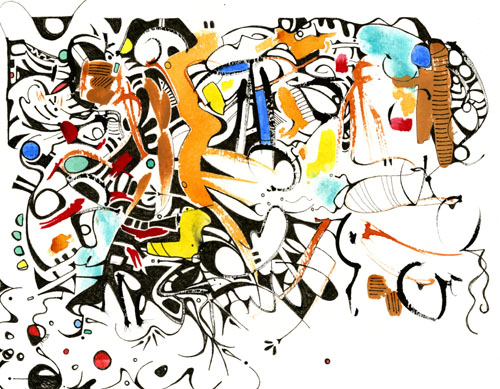Shakespeare’s “Macbeth” is a very human tale of choices for which dedicated ambition(s) is pursued by vigorously thwarting the interests (and lives) of others; an account which showcases the abuse and misinterpretation of information (superstition) in order to justify heinous action. Through the use of line and colour, my purpose is to illustrate the dark shadows in humanity: through the use of space, a mirror for reflection which leads to hope.
There is the gorgeous Vivaldi opera of Macbeth. Shostakovich's (and Alexander Preys) opera entitled "Lady Macbeth of Mtsensk" premiered in 1934 in Leningrad. It was based on an 1865 novella by Nikolai Leskov in which a childless merchant's wife is sexually assaulted and then subsequently becomes the lover of this man to enact revenge upon her cheating husband.
When the tryst is discovered by the husband's father; he is murdered. Then the husband is murdered. For their crimes they are condemned to a penal colony in Siberia and upon the journey the lover/fellow murderer takes up with another woman on the journey and in her rage and sorrow the main character of this story drowns herself and the other woman in the Volga River.
Although the characters are theatrical in the operatic sense....there is an emphasis in this opera on how poorly women are treated by their male counterparts.
In a revised version in the final scene, a convict mutters: “Oh, why is our life so dark, terrible? Are people really born for such a life?”
Shakespeare's Macbeth was written during the time of James I and includes central fears and beliefs that were held by this King: treason; demons of the supernatural; regicide; the fine balance of power. The paradoxes in this play do not allow for a simplistic reading: The hero who is at the same time a villain.
Surely someone has (and if not they should) written the story of Macbeth from the perspective of someone who spent time with him and looked up to him and admired him (and then, or perhaps not, discovered him to be the villain). The angles are numerous. Shostakovich attempted in Lady Macbeth of Mtsensk to showcase the unfair treatment of women and to address the fact that tragedy plagues us all - as well as to create an opera that would stand the test of time. The time and place of when this was written is of note.
Same Story: Different Perspective leaves room for the white space; for the story to fall into a different version. Perhaps not the final nor the best version but providing an avenue for discovery and expansion.
Macbeth lives on. I personally have my own version. Angles, angles, angles.
